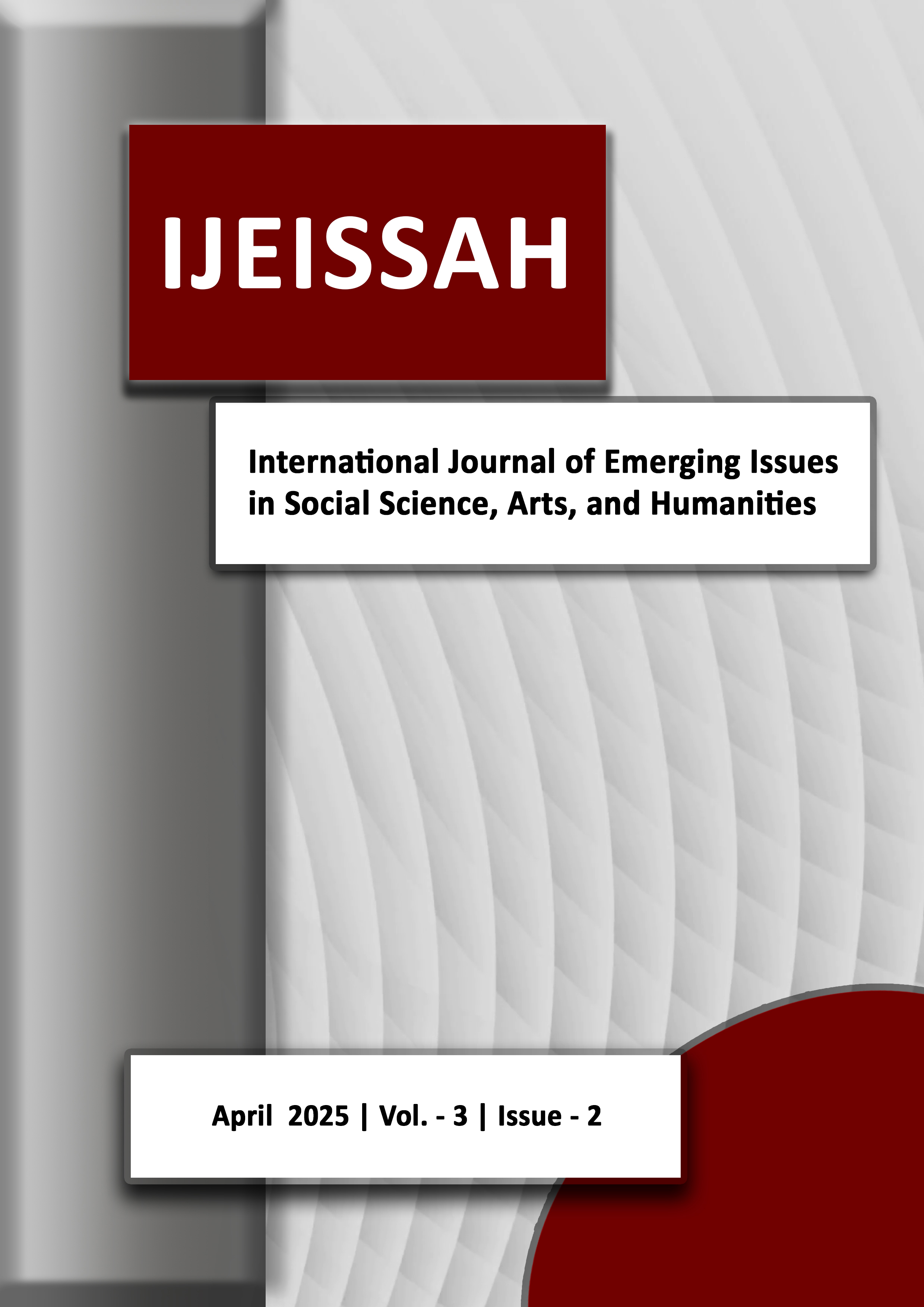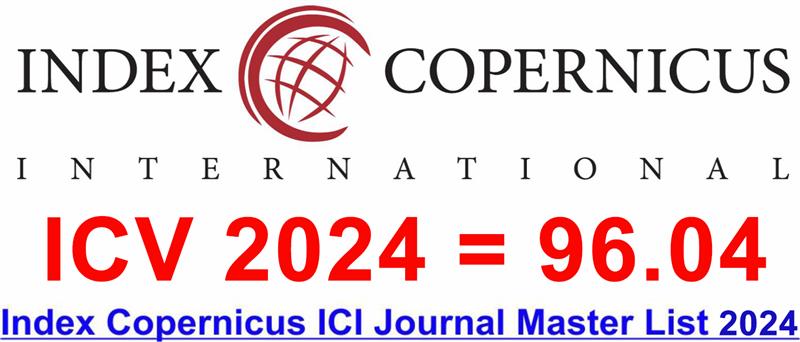Decoding Consumer Preferences: The Influence of Labels and Brand Image on Buying Interest in the Chinese Luxury Market
DOI:
https://doi.org/10.60072/ijeissah.2025.v3i02.002Abstract
This study investigates the impact of labels and brand image on consumer buying interest within the Chinese luxury market. Given the rapid expansion of luxury consumption in China, this research seeks to understand how factors such as perceived social status, cultural relevance, brand heritage, and brand symbolism influence Chinese consumers’ interest in luxury goods. A qualitative approach was adopted, involving semi-structured interviews with 20 participants across major Chinese cities. Thematic analysis revealed four key themes: (1) Perceived Social Status, where luxury goods were viewed as symbols of personal success; (2) Cultural Relevance of Brand Image, with a preference for brands incorporating traditional or modern Chinese elements; (3) Importance of Brand Labels and Heritage, which enhanced trust and perception of quality; and (4) Influence of Brand Symbols on Purchasing Behaviour, with logos and packaging playing a significant role in consumer recognition and appeal. These findings underscore the importance for luxury brands to align their strategies with Chinese cultural values, social aspirations, and brand heritage to build consumer loyalty in this market. This study contributes to the literature on consumer behaviour in emerging markets and provides practical insights for luxury brands aiming to adapt and thrive in China’s competitive luxury sector.
Keywords:
Brand Heritage, Brand Image, Chinese Luxury Market, Consumer Buying Interest, Cultural RelevanceReferences
Cavender, B., Der Arslanian, K., & Chan, C. (2014). Luxury in China: The end of bling. Luxury brands in emerging markets, 148-154. DOI: https://doi.org/10.1057/9781137330536_14
Chadha, R., & Husband, P. (2010). Cult of the luxury brand: inside Asia's love affair with luxury. Nicholas Brealey International.
Chang, Y., & He, Y. (2024). How Does Luxury Affect and Reflect the Society of Modern Society. Advances in Economics, Management and Political Sciences, 101, 52-59. DOI: https://doi.org/10.54254/2754-1169/101/20231721
Chen, J., Gao, J., Liu, Z., Luo, Y., Chen, M., & Bu, L. (2022). Luxury in emerging markets: An investigation of the role of subjective social class and conspicuous consumption. Sustainability, 14(4), 2096. DOI: https://doi.org/10.3390/su14042096
Chen, Y., & Zhuang, J. (2024). Trend conformity behavior of luxury fashion products for Chinese consumers in the social media age: drivers and underlying mechanisms. Behavioral Sciences, 14(7), 521. DOI: https://doi.org/10.3390/bs14070521
Chen, Z. (2023). Research on the Marketing Strategies of Luxury Bag Brands in the Chinese Market. Advances in Economics, Management and Political Sciences, 48, 157-164. DOI: https://doi.org/10.54254/2754-1169/48/20230441
Da-li, L. I. (2013). Research on Chinese face value and consumers' conducts of ostentatiously purchasing luxuries. Journal of Luoyang Institute of Science and Technology. DOI: https://doi.org/10.1111/1468-4446.12862
Farah, M. F., & Fawaz, R. S. (2016). A comparison of the influence of personal and cultural values on the consumption of luxury goods across Arab regions: Levant versus Gulf. Contemporary Management Research, 12(2). DOI: https://doi.org/10.7903/CMR.15067
Gaffney, A. M., & Hogg, M. A. (2023). Social identity theory. In Oxford Research Encyclopedia of Psychology. DOI: https://doi.org/10.1093/acrefore/9780190236557.013.681
Hamdani, A., So, I. G., Maulana, A. E., & Furinto, A. (2023). How Can Conspicuous Omni-Signaling Fulfil Social Needs and Induce Re-Consumption?. Sustainability, 15(11), 9015. DOI: https://doi.org/10.3390/su15119015
Han, C. M., Nam, H., & Swanepoel, D. (2023). Perceived brand localness of foreign brands and its impacts on brand trust and purchase intentions in developing countries in Asia: a social identity theory perspective. International marketing review, 40(6), 1297-1324. DOI: https://doi.org/10.1108/imr-05-2022-0130
Hann, Y. (2011). Cross-cultural understandings of “face” and their influence on luxury brand consumption: A comparison of British and Korean attitudes and practices. Journal of Global Fashion Marketing, 2(1), 36-43. DOI: https://doi.org/10.1080/20932685.2011.10593081
Jap, W. (2010). Confucius face culture on Chinese consumer consumption values toward global brands. Journal of International Management Studies, 5(1), 183-192.
Jin, X., Wang, H., Wang, T., Li, Y., & Deng, S. (2015). Why Chinese elites buy what they buy: The signalling value of conspicuous consumption in China. International Journal of Market Research, 57(6), 877-908. DOI: https://doi.org/10.2501/IJMR-2015-041
Kuo, C. H., Huang, M. H., & Huang, C. I. (2023). The Anti-Corruption Campaign, Luxury Consumption, and Regime Trust in China: Changing Patterns of Perceived Political Risk and Their Consequences. Journal of contemporary China, 32(140), 243-263. DOI: https://doi.org/10.1080/10670564.2022.2071895
Langner, S., & Wiedmann, K. P. (2015). Social identity theory. Wiley encyclopedia of management, 1-2. DOI: https://doi.org/10.1002/9781118785317.WEOM090246
Li, G. C. (2021). From parvenu to “highbrow” tastes: The rise of cultural capital in China’s intergenerational elites. The British Journal of Sociology, 72(3), 514-530.
Li, J., Ghaffari, M., & Su, L. (2020). Counterfeit luxury consumption strategies in a collectivistic culture: the case of China. Journal of Brand Management, 27(5), 546-560. DOI: https://doi.org/10.1057/S41262-020-00197-4
Li, J., Zhang, X. A., & Sun, G. (2015). Effects of “face” consciousness on status consumption among Chinese consumers: Perceived social value as a mediator. Psychological reports, 116(1), 280-291. DOI: https://doi.org/10.2466/17.07.PR0.116K11W3
Lin, J. (2023). China Luxury Market Consumption under the Covid-19 Pandemic. Advances in Economics, Management and Political Sciences, 11, 373-383. DOI: https://doi.org/10.54254/2754-1169/11/20230569
Ma, L., Zhang, X., & Yu, P. (2021). Mobile users’ online luxury consumption in China: the moderating role of face consciousness. Mobile Information Systems, 2021(1), 6633477. DOI: https://doi.org/10.1155/2021/6633477
Ma, X., & Becker, F. (2017). China: Kulturelle Werte und konsumentenverhalten im größten Luxusmarkt der Welt. Luxusmarkenmanagement: Grundlagen, Strategien und praktische Umsetzung, 187-199. DOI: https://doi.org/10.1007/978-3-658-09072-2_7
Naumova, O., Bilan, S., & Naumova, M. (2019). Luxury consumers’ behavior: a cross-cultural aspect. Innovative Marketing, 15(4), 1-13. DOI: https://doi.org/10.21511/IM.15(4).2019.01
Perry, P., Barnes, L., & Ye, T. (2020). The evolution of the Chinese luxury fashion consumer: An interpretive study of luxury value perceptions. Understanding luxury fashion: From emotions to brand building, 175-202. DOI: https://doi.org/10.1007/978-3-030-25654-8_8
Salem, S. F., & Salem, S. O. (2018). SELF-IDENTITY AND SOCIAL IDENTITY AS DRIVERS OF CONSUMERS'PURCHASE INTENTION TOWARDS LUXURY FASHION GOODS AND WILLINGNESS TO PAY PREMIUM PRICE. Asian Academy of Management Journal, 23(2), 161-184. DOI: https://doi.org/10.21315/AAMJ2018.23.2.8
Scheepers, D., & Ellemers, N. (2019). Social identity theory. Social psychology in action: Evidence-based interventions from theory to practice, 129-143. DOI: https://doi.org/10.1007/978-3-030-13788-5_9
Siu, N. Y. M., Kwan, H. Y., & Zeng, C. Y. (2016). The role of brand equity and face saving in Chinese luxury consumption. Journal of Consumer Marketing, 33(4), 245-256. DOI: https://doi.org/10.1108/JCM-08-2014-1116
Wang, N., Abidin, S. Z., Shaari, N., & Mansor, N. (2024). Influence of Chinese cultural values on consumer decision-making: A PRISMA-based systematic review. International Journal of advanced and applied sciences, 1, 78-86. DOI: https://doi.org/10.21833/ijaas.2024.01.009
Warden, C. A., Huang, S. C. T., Yen, W. H., & Chen, J. F. (2021). The Tao of consumption: private self in a collective culture. Journal of Service Theory and Practice, 31(5), 756-782. DOI: https://doi.org/10.1108/JSTP-06-2020-0135
Zhang, X. A., & Wang, W. (2019). Face consciousness and conspicuous luxury consumption in China. Journal of Contemporary Marketing Science, 2(1), 63-82. DOI: https://doi.org/10.1108/JCMARS-01-2019-0002
























